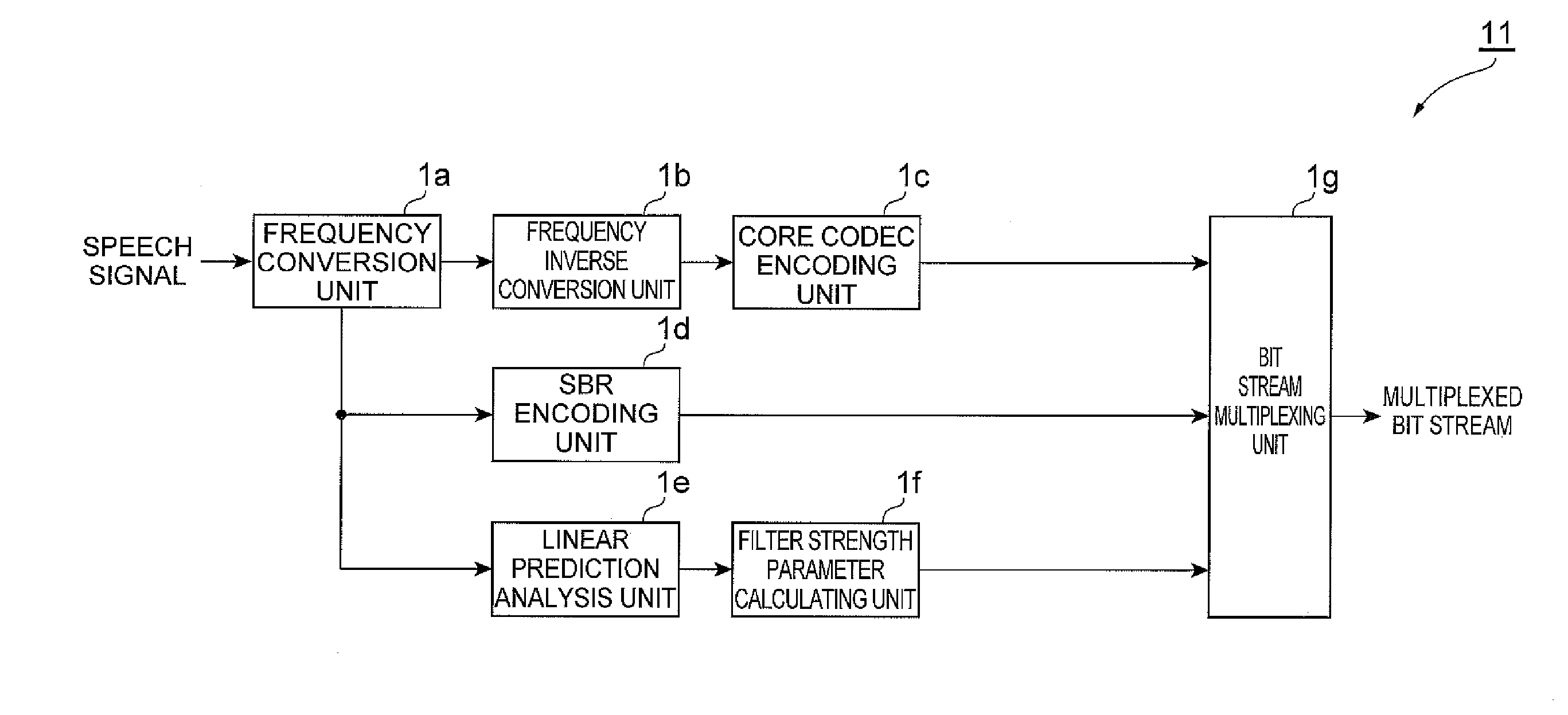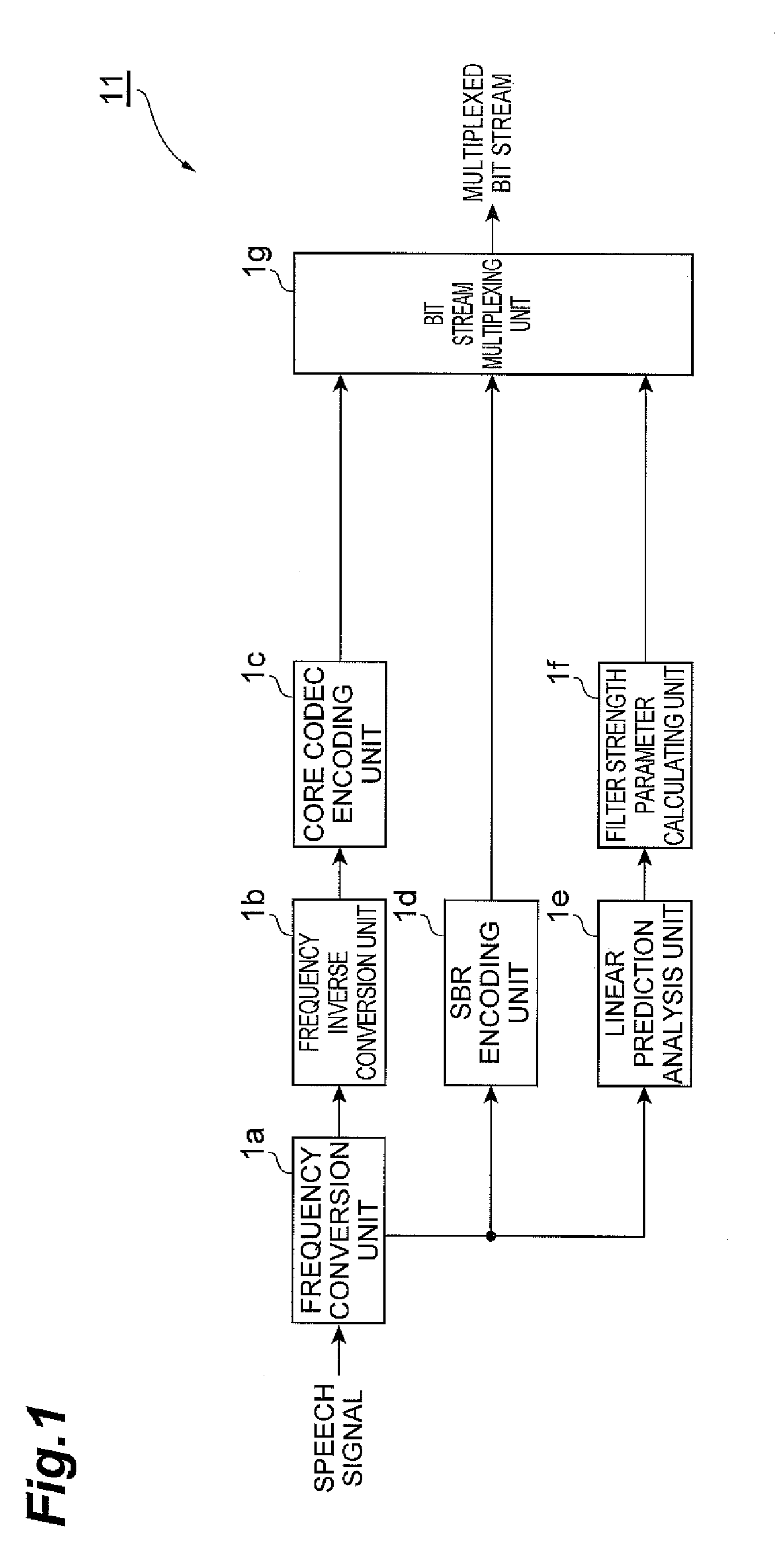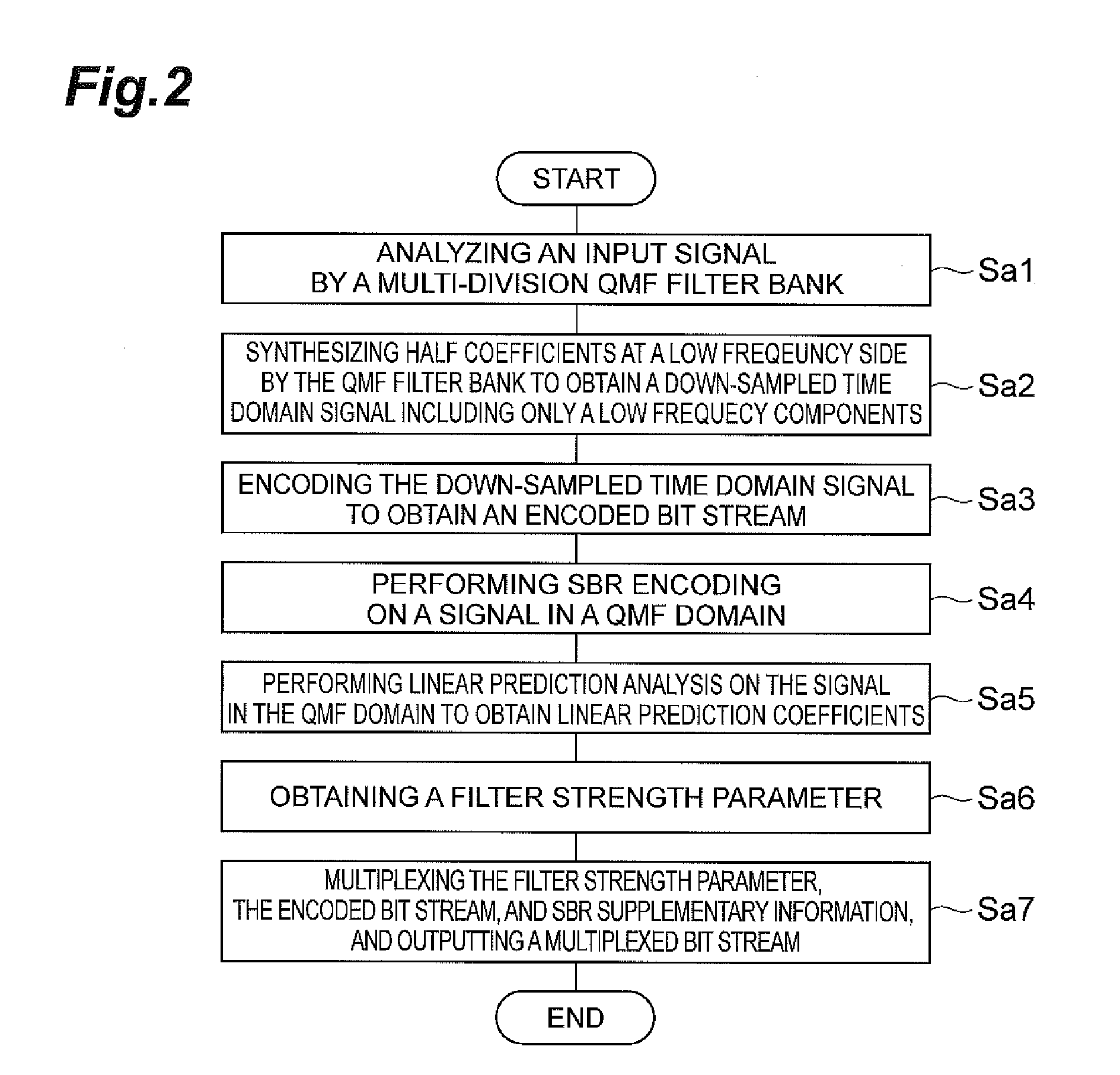Speech encoding/decoding device
a technology of encoding/decoding device and speech, which is applied in the field of speech encoding/decoding system, can solve the problems of not being able to obtain a less distorted temporal envelope with respect to the high frequency component, significantly increasing the bit rate of the whole encoded bit stream, etc., to improve the subjective quality of the decoded signal, increase the bit rate, and increase the bit rate
- Summary
- Abstract
- Description
- Claims
- Application Information
AI Technical Summary
Benefits of technology
Problems solved by technology
Method used
Image
Examples
first embodiment
Modification 9 of First Embodiment
[0223]A speech encoding device (not illustrated) of a modification 9 of the first embodiment physically includes a CPU, a ROM, a RAM, a communication device, and the like, which are not illustrated, and the CPU integrally controls the speech encoding device of the modification 9 by loading and executing a predetermined computer program stored in a built-in memory of the speech encoding device of the modification 9 such as the ROM into the RAM. The communication device of the speech encoding device of the modification 9 receives a speech signal to be encoded from outside the speech encoding device, and outputs an encoded multiplexed bit stream to the outside. The speech encoding device of the modification 9 includes the time slot selecting unit 1p1 instead of the time slot selecting unit 1p of the speech encoding device described in the modification 8. The speech encoding device of the modification 9 further includes a bit stream multiplexing unit th...
second embodiment
Modification 2 of Second Embodiment
[0228]A speech encoding device 12b (FIG. 47) of a modification 2 of the second embodiment physically includes a CPU, a ROM, a RAM, a communication device, and the like, which are not illustrated, and the CPU integrally controls the speech encoding device 11b by loading and executing a predetermined computer program stored in a built-in memory of the speech encoding device 12b such as the ROM into the RAM. The communication device of the speech encoding device 12b receives a speech signal to be encoded from outside the speech encoding device 12b, and outputs an encoded multiplexed bit stream to the outside. The speech encoding device 12b includes the time slot selecting unit 1p1 and a bit stream multiplexing unit 1g5 instead of the time slot selecting unit 1p and the bit stream multiplexing unit 1g2 of the speech encoding device 12a of the modification 1. The bit stream multiplexing unit 1g5 multiplexes the encoded bit stream calculated by the core ...
third embodiment
Modification 5 of Third Embodiment
[0231]As described in the modification 3 of the third embodiment, it is preferable that the envelope shape adjusting unit 2s control eadj(r) by using a predetermined value eadj,Th(r), considering that the adjusted temporal envelope eadj(r) is a gain coefficient multiplied by the QMF subband sample, for example, as the expression (28) and the expressions (37) and (38).
eadj(r)≧eadj,Th (48)
Fourth Embodiment
[0232]A speech encoding device 14 (FIG. 48) of the fourth embodiment physically includes a CPU, a ROM, a RAM, a communication device, and the like, which are not illustrated, and the CPU integrally controls the speech encoding device 14 by loading and executing a predetermined computer program stored in a built-in memory of the speech encoding device 14 such as the ROM into the RAM. The communication device of the speech encoding device 14 receives a speech signal to be encoded from outside the speech encoding device 14, and outputs an encoded multi...
PUM
 Login to View More
Login to View More Abstract
Description
Claims
Application Information
 Login to View More
Login to View More - R&D
- Intellectual Property
- Life Sciences
- Materials
- Tech Scout
- Unparalleled Data Quality
- Higher Quality Content
- 60% Fewer Hallucinations
Browse by: Latest US Patents, China's latest patents, Technical Efficacy Thesaurus, Application Domain, Technology Topic, Popular Technical Reports.
© 2025 PatSnap. All rights reserved.Legal|Privacy policy|Modern Slavery Act Transparency Statement|Sitemap|About US| Contact US: help@patsnap.com



